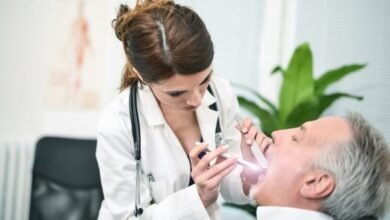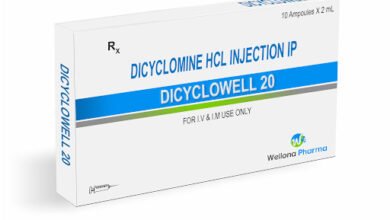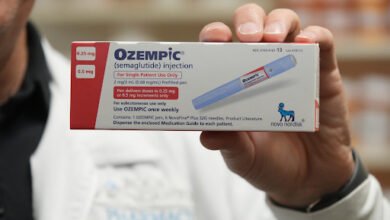Atopic Dermatitis: Physical Impacts for People of Color

The Expert:
Ms. Lakshi Aldredge, MSN, ANP-BC, DCNP, FAANP is an adult nurse practitioner who practices at the VA Portland Healthcare System in the Dermatology Service and is also the Director for the Primary Care NP Residency Program. She obtained her Master’s of Science in Nursing degree from the University of Portland in 1998 as well as national certification as an Adult Nurse Practitioner that same year. She obtained her dermatology nurse practitioner certification in 2018.
What does atopic dermatitis (eczema) look like in darker skin? Are there unique eczema symptoms on darker skin tones?
It does look very different. Traditionally, in Caucasian skin, it tends to look like either skin-colored pink or red patches that look like they’ve been scratched. They can even look lichenified, which means thicker skin. However, in darker skin tones it can actually look more gray or purplish instead of that pink or red color. It can also develop, again, that lichenification or thickening of the skin that results from constant scratching of the skin. So it looks grayer, darker, even purplish, even black or dark gray, and that’s different than the way that we see it in Caucasian skin.
How does skin tone affect diagnosis of eczema especially for healthcare providers who do not see many women of color?
This is a great question, and it really becomes what we call a diagnostic dilemma. In traditional, again, images, we’re used to seeing Caucasian skin, and eczema is fairly easy to diagnose when it looks like those pink to red itchy patches. In skin of color, because it can look like a couple of different things, such as psoriasis, contact dermatitis, it becomes a little bit more of a diagnostic dilemma and sometimes patients are misdiagnosed or they may even require a skin biopsy for the clinician to actually confirm the diagnosis of eczema.
Is eczema more difficult to treat in people of color?
You know, I think so. At least that’s been my experience both personally and in my profession — my clinical practice — and the reason why is because in skin of color, the skin — actually the epidermis, which is the top layer of the skin — it can be a little bit different than in fairer skin tones, where the skin tends to be a little thinner. In darker tones, the keratinocytes, or that top layer of the skin, tends to be a little thicker and, therefore, it can be more difficult for things like topical medications to penetrate down into the dermis, which is the deeper layer of the skin where some of the immunological activity is happening that is actually causing the atopic dermatitis or eczema — the inflammation and the itch. So it is harder to treat. Sometimes I think it takes longer in skin of color for you to see a clinical response, so you really need to be persistent with following through with your regimen. But it definitely becomes a challenge sometimes to treat appropriately and long enough and with the right therapies in patients with skin of color.
Would you say that women of color have a more challenging journey with getting treatment for eczema?
So you know, I think that one of the reasons that women with skin of color have more challenging eczema or atopic dermatitis there — it’s multifactorial. First of all, their access to healthcare is not always as equitable as Caucasian women, unfortunately. Second of all, because it can be a diagnostic dilemma or a challenge, they’re often misdiagnosed, so their eczema continues to get untreated and becomes worse, so when they actually do find a provider who accurately diagnoses them, their skin is often more — has progressed from a more mild disease variant to a more moderate to severe disease. When you get into a more moderate or severe disease profile, it does become harder to get your skin clear, to heal that top layer of the skin, so it does takes patience and persistence.
What are your best recommendations for effective relief of symptoms?
Moisturization is the number one thing that I teach my patients about management of eczema. You must moisturize your skin. We recommend bathing once a day — no more, patting dry gently, and then immediately moisturizing within three minutes of getting out of the shower or the bath with a good emollient, the greasier the better. Even plain petroleum jelly is wonderful. And then immediately after that, using your medicated topical therapy, whether it’s a topical steroid or other treatments that we have now that are great for atopic dermatitis and don’t have the concerns that we have traditionally had with topical steroids, which have been the mainstay of treatment, immediately putting the topical steroids or the topical treatments on once or sometimes even twice a day, and then giving that at least a good two weeks for the flare to calm down and then you can go to moisturizing every day still, but you don’t have to apply your topical prescription therapies, maybe once or twice a week to keep things at bay.
If these initial steps don’t relieve symptoms, what else would you recommend?
Even after topical therapies, some women still have really calcitrant disease that’s difficult to treat, and fortunately in the last 10 years, we have now had a lot of research that has gone into atopic dermatitis and eczema, and we have fabulous treatments. Um, unfortunately, one of the better treatments is an injection that the patient will give themselves once every two weeks. Um, it can go right into the stomach or in the thighs, or you can have somebody else give it to you in the back of the arm. Highly, highly effective. These are called biologic therapies. There are also pills that can be used that can be very effective. They do usually require daily treatment of the pills, just like with the topicals when you’re flaring, but the nice thing is we have really nice treatments available now that are safe and aren’t, you know, kind of chasing the Beast, as I try to call it. It keeps the skin intact. It keeps the immune system at a normal level, so you’re not flaring on and off. That’s the biggest thing that we see with eczema and atopic dermatitis: You get better and then a couple of weeks goes by, and then you’re flaring again and miserable and itchy. You treat again or you may get a course of steroids or use your topical preparations. Skin gets better, you do fine for a couple of weeks and then you flare again. What we really are trying to do and should be the goal of treatment is to even out those flares so that your skin is in a normal state, just like a patient without eczema. You’re in a normal state, so you’re not experiencing those flares every month or so, and your skin is much more at what we call homeostasis.
What are hyperpigmentation and hypopigmentation? How are they related to eczema?
Especially in skin of color, we see way more hyperpigmentation or scarring that happens after injury or trauma to the skin. This is probably a feature of the skin being actually a little bit thicker than we see in Caucasian skin. So hyperpigmentation means darkening of the normal skin color. Hypopigmentation is lightening of the normal skin color, so some people scar with lighter patches and some people scar with darker patches. In skin of color women, we tend to scar darker and that’s called post-inflammatory pigmentation. Sometimes it takes a long time for that to go away and for the skin to normalize and sometimes, unfortunately, depending how deep the damage in the skin is, that post-inflammatory pigmentation may not resolve at all, so you’re left with dark patches or scars. So really what we want to try and avoid is a lot of scratching, which actually causes the physical trauma that causes the scarring, so we want to try and minimize scratching and in order to minimize the scratching, of course, we need to eliminate the itch and that’s where therapy — appropriate therapy — is important, so that we don’t trigger the immune system to cause that excessive itching that we associate with eczema and you’re not scratching yourself and causing that pigmentation of the skin.
Researchers have found African American children are almost twice as likely as their white counterparts to have eczema — but are much less likely to receive a proper diagnosis or adequate treatment. What are some factors contributing to these disparities?
It is an area, fortunately, that is getting a lot of attention, and I’m so glad it has come to the forefront. It’s something that all women and all families need to be aware of. There is great healthcare disparity in the United States of America, which is really unfortunate given we are one of the wealthiest countries that has great access to healthcare — except if you are of a community of need.
We definitely know that in atopic dermatitis or eczema, we see healthcare disparities, both in the ability of patients to access healthcare services and also just basic healthcare needs. Living in safe places, living in places with adequate water and hygiene, ability to have safe places to keep and live and keep their medications. So all of these factors play a role.
One of the things we know about atopic dermatitis is it tends to be worse in urban communities, and when we look at urban communities, that’s often where our African American families maybe live, and they live in, um, more impoverished areas in the urban areas, oftentimes having difficult access to clean water or regular baths or showers that we often recommend for our eczema patients. They may not have the ability to access healthcare services or appropriate healthcare services. Certainly, they oftentimes do not have the ability to get access to a dermatology provider who are the experts in managing atopic dermatitis. So if they have any access at all, it’s often with a community provider who may, again, misdiagnose them, not provide them with the appropriate treatments. Sometimes — I hate to say it — they may not even be aware of the newer treatments that are available to really help clear atopic dermatitis, so I really do see our children of skin of color, especially our African American colleagues and friends, really suffer with this disease because they don’t have access to all of the health care amenities that other folks in our communities have: daily moisturizing treatments and appropriate creams, clothing that is comfortable to wear, protecting their skin from the environment — we definitely know that colder temperatures make atopic dermatitis worse, so if they’re not living in warm, you know, nice, comfortable areas, that can flare their skin as well.
Also exposure to chemicals and contaminants can also exacerbate the eczema and we definitely know in urban communities, there are a lot of contaminant environments: smoke, exhaust, chemicals. All of those things can exacerbate atopic dermatitis.
We also know that atopic dermatitis is associated with asthma and hay fever and food allergies, and we see all three of these in our young children, especially in skin of color, so we not only have our little African American kids with really bad eczema, but they also suffer from asthma or are at a higher risk of developing asthma and hay fever, and then also developing food allergies.
Skin of color patients often don’t have primary care providers who really can manage all of the — you look at the patient holistically and recognize things like, “Oh, you have hay fever, you also have skin condition. I wonder if this is atopic dermatitis,” and then put those pieces together. Oftentimes, our more impoverished communities are doing episodic care, accessing, you know, urgent care services rather than consistent healthcare practices, and so that also makes it challenging to put those pieces together and really manage the patient holistically and help prevent the onset of those other comorbidities.
Would you say cultural competence is important when it comes to eczema?
For my patients, as skin of color, I definitely say first of all, if you don’t feel comfortable with the provider that you’re seeing, uh, really make sure and ask who you’re going to be seeing before you go in and make sure it’s somebody you’re comfortable with. And for providers, you — we — really need to do a better job of asking our patients what their preferences are as far as what they like to put on their skin, what their daily bathing habits are. It may not be feasible for some folks to be able to bathe every day, so they may be just, you know, doing washing with washcloths and kind of wiping themselves down. So I think it’s really important to ask, as a provider, recognizing the cultural practices and beliefs, what people are comfortable putting on their skin and asking that in a gentle way that is respectful of our patients.
What would you tell your family member if they had symptoms of eczema but were having trouble getting a diagnosis?
Find a provider on your website who specializes in atopic dermatitis. On almost every provider’s website, they can identify what they specialize in and you can identify providers. Also go to the National Eczema Association website and they can link you with a provider that specializes in that.
What is the most important piece of advice you have given someone about coping with eczema?
That there is hope for getting clear, normal skin, more so than ever. We have advanced treatments, so this is not something you have to live with and suffer with. You can get relief from your itching. We can normalize the skin and you can live a healthy, quality life, and you should not have to think about someone and identify as someone who has eczema, but as a beautiful woman of color.
Source link
#Atopic #Dermatitis #Physical #Impacts #People #Color



